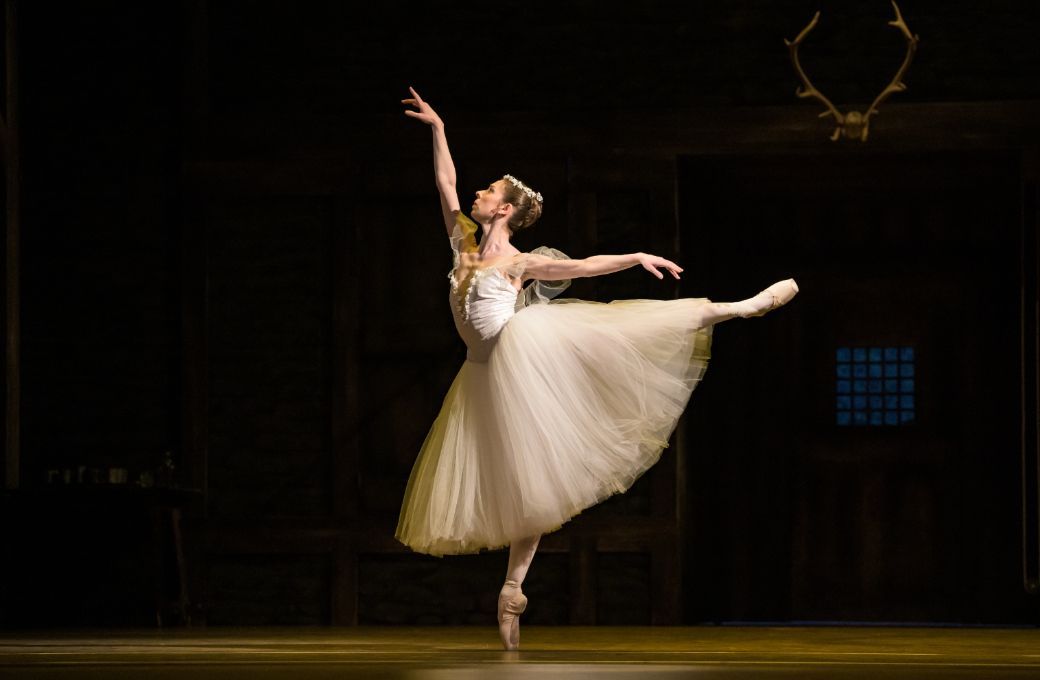As far as productions of La Sylphide go, Johan Kobborg’s must rate among the top three in the world. A former principal dancer with the Royal Danish Ballet and The Royal Ballet, he is the most obvious choice in today’s climate, to pass on the great Bournonville tradition to future generations of dancers.

In the Czech National Ballet, Kobborg has found the perfect vehicle to invest his knowledge and expertise. It was a privilege to be able to watch matinee and evening performances at the State Opera in Prague with two different casts. The company bears all the hallmarks of a group of dancers who are hungry to learn and to embody whatever is offered to them, and it was clear that the style and technique had been successfully achieved.
Once the spectator has recovered from the splendour of the recently refurbished interior of the opera house itself (which fairly takes one’s breath way), there is a lot to be said for this exceptionally beautiful and intimate production. The story is set in Scotland where a young lad, James, is betrothed to Effie. He is led astray by a sylph who has been watching him grow since he was a child. He is later cursed by a witch, Madge, because he tries to throw her out of his home. Nothing more needs to be said because the narrative is crystal clear. One of the outstanding features of this production is that the mime sequences, of which there are many, are easy to follow. There is none of the ambiguity that often comes with some of the well-known classics.
Sets by Martin Černý are atmospheric: homely in the first act and with a suitably overgrown woodland glade in the second. Lighting design by Pavel Dautovský enhanced much of the set and action, neither detracting nor over-embellishing any aspect of the staging. Barbora Maleninská’s costumes were delightfully understated with muted colours for the tartans and bright, white Romantic tutus for the sylphs in the second act.
As the lights went down and the orchestra began to play Herman von Løvenskjold's rousing overture, I was struck by the volume rising from the pit. Situated in the middle of the stalls, it felt as if I was in exceptionally close proximity to the State Opera Orchestra. In some ways this was immeasurably pleasing but in others, it rather drew attention to the odd bum note and occasionally erratic tempi.
The matinee saw debuts in all the leading roles. Danilo Lo Monaco as Gurn (who is in love with Effie) was full of ebullient charm, and if he strained his upper body a little in order to achieve the height in his jumps, he did at least manage some superb grand allegro. Alexandra Pera was an affable Effie and sweetly genuine in her depiction of the role. The afternoon's Madge was Kristýna Němečková: powerful, scheming and at times, quite alarming. She will grow into a very convincing proponent of this rather unappealing character. The Sylph and James were Ayaka Fujii and Oleg Ligaj respectively. It was astonishing to see how well the two of them grasped every aspect of their performances. Ligaj, a Ukrainian dancer who has only been in the company a year, is still a member of the corps de ballet. It was good to see opportunities like these being given to such a young dancer and equally, that it proved so fruitful. Fujii was a light and playful Sylph, secure in all the challenges and a sweet, demure foil for Ligaj, who was not only fluid in all the technical demands but engagingly sincere in his acting. A bright future awaits him.
The evening revealed a marked step up in performances across the board. Irina Burduja as Effie and Matěj Šust as Gurn, looked remarkably relaxed in their roles. Šust was particularly humorous in his relaying of sylph 'sightings' as well as dancing with true Bournonville flair. Tereza Podařilová infused her Madge with a cruel streak. Unnervingly, at the close of the ballet, rather than mimic the witch's cackle, so often portrayed with shaking body and wide open mouth, she chose to glare at the audience as if to confirm her triumph of evil, in no uncertain terms: chilling but highly effective.
Paul Irmatov's James and Alina Nanu's Sylph were superlative. It's hard to imagine better interpretations. Irmatov's first solo was explosive. His opening jumps propelled him so high into the air, it was as if someone had pressed the eject button. He kept up this momentum throughout the performance but always within the constraints of the music. Nanu's Sylph was like thistledown, from the opening phrases until her demise. She literally floated, hovered and flew with exquisite ethereality, yet there was an ever present air of mischief! These two could dance this ballet anywhere in the world and hold their own.
The company as a whole has done Kobborg proud. The Bournonville style requires excellent ballon and extraordinary strength in the metatarsals to accommodate the constant stream of speedy allegro. This they collectively achieved, giving an exciting reel, pas de trois/six and offering some exceedingly buoyant sylphs. The litmus test is: would I want to see it again? Yes, again and again.
Deborah's press trip to Prague was funded by Czech National Ballet


